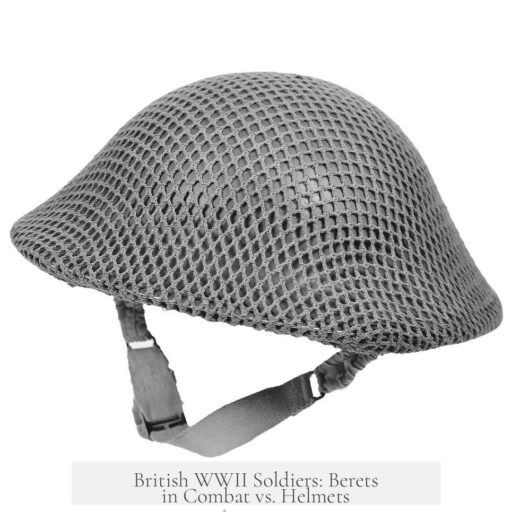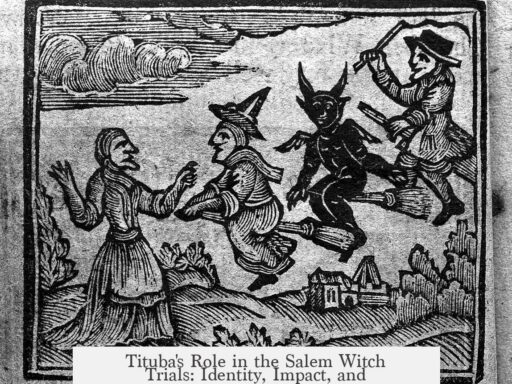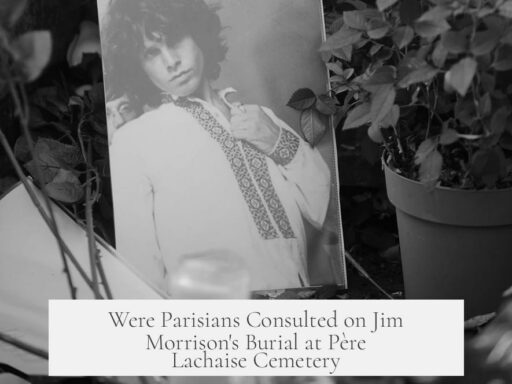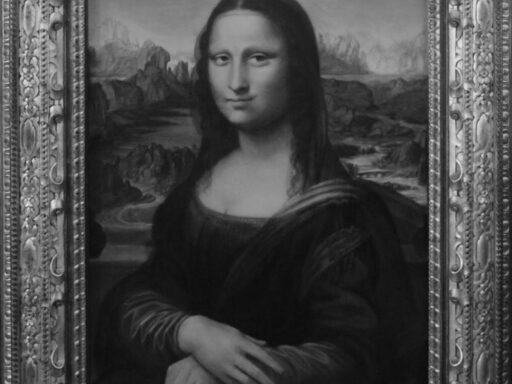British WWII era soldiers generally did not wear berets into combat instead of their helmets. The standard combat headgear for most British infantry was the Brodie helmet, designed to provide protection on the battlefield.
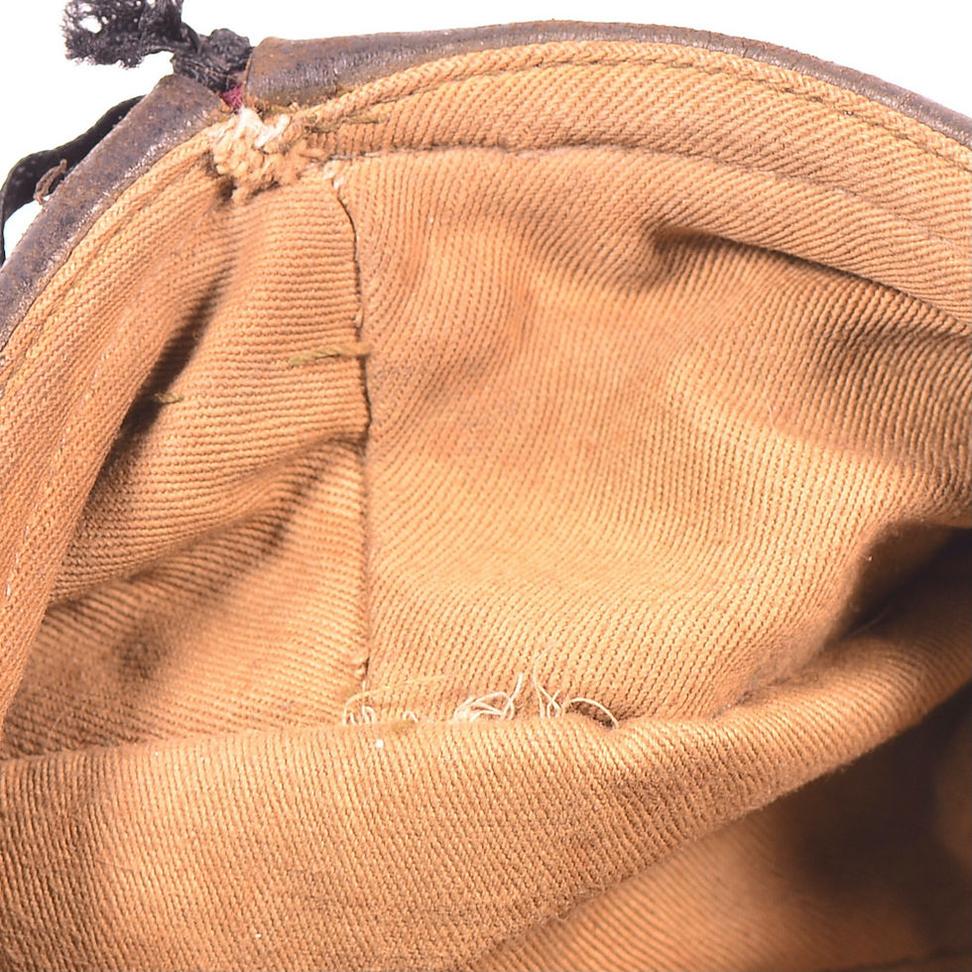
Berets were officially restricted to certain specialized units. The Royal Tank Regiment (later known as the Royal Armoured Corps) wore the black beret as distinctive headgear. Tank crews favored the beret in combat due to its compact, brimless design, which made it easier to look out of tank viewports and operate equipment without obstruction.
Similarly, the Parachute Regiment adopted the red beret as a unit marker. However, when in combat, paratroopers typically wore a steel helmet of a different design, more similar to the American M1 helmet, providing better protection during airborne operations.
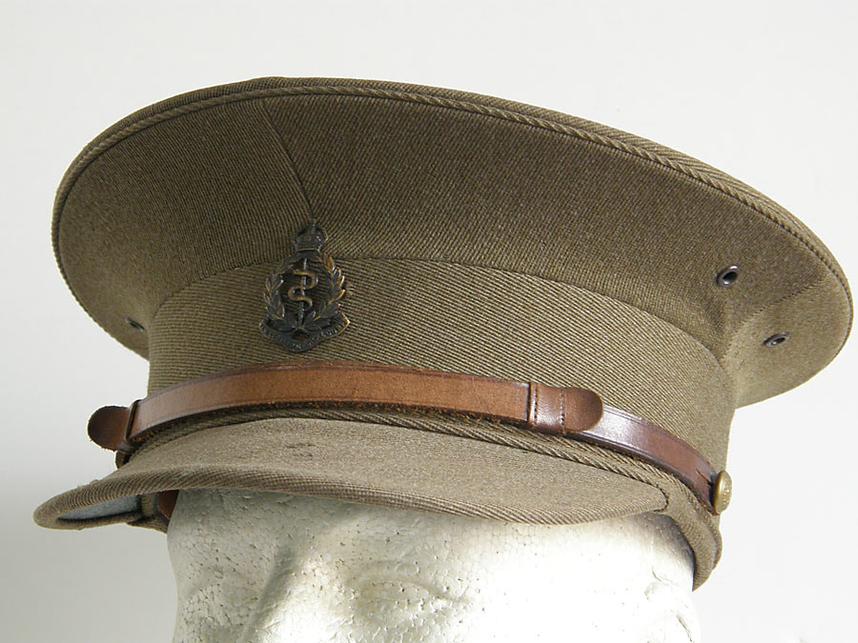
Infantry serving alongside tanks continued to wear standard steel helmets. These helmets offered essential ballistic protection, which berets could not provide. This practice was consistent for most frontline combat troops.
There were exceptions with specialized forces. For example, Lord Lovat’s 1st Special Service Brigade commandos landed during the D-Day invasion on Sword Beach wearing their green berets instead of helmets. According to historian Antony Beevor, these commandos discarded their helmets last minute, expressing pride in their beret as a symbol of their elite status.
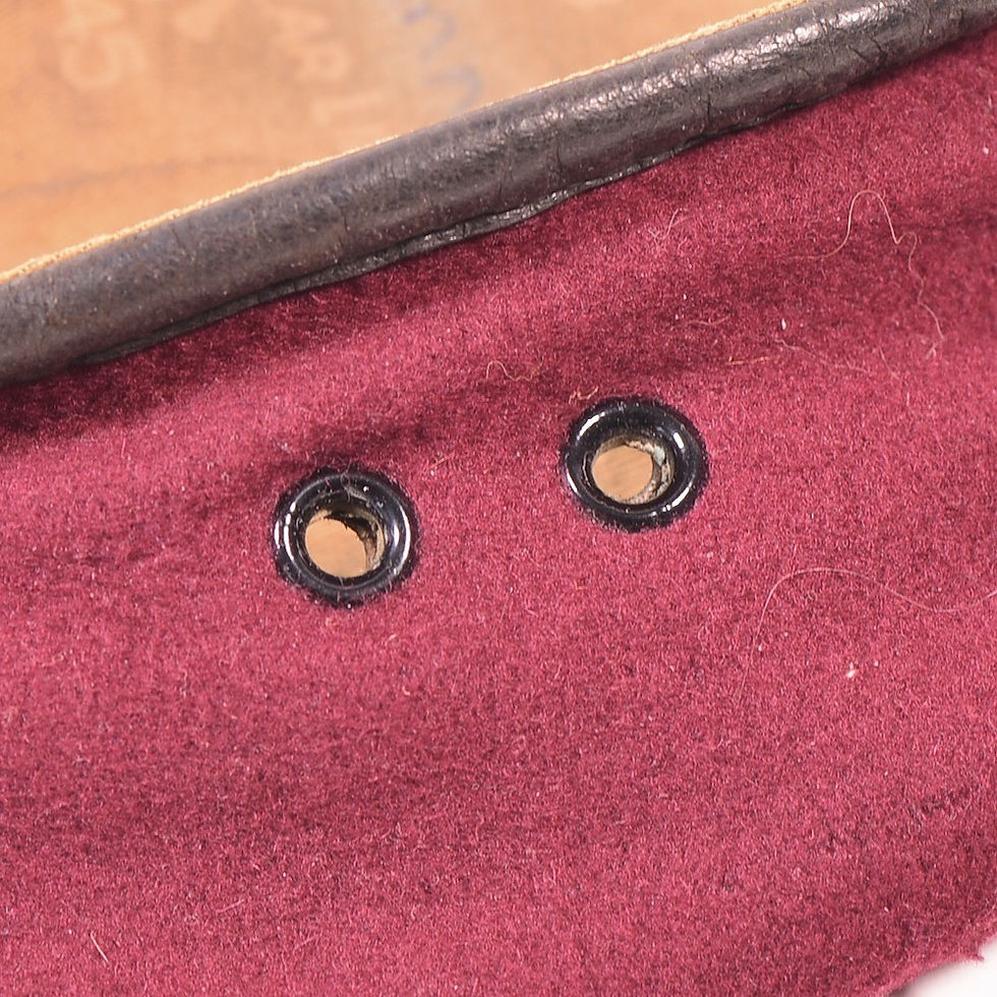
Officers sometimes had different regulations regarding headgear. Field Marshal Montgomery notably wore a Royal Tank Regiment beret during non-combat situations, but not in frontline fighting.
The frequency of regular infantry soldiers wearing berets instead of helmets into direct combat is uncertain and likely rare. The beret’s primary role was unit identification and ease of wear inside vehicles rather than battlefield protection.
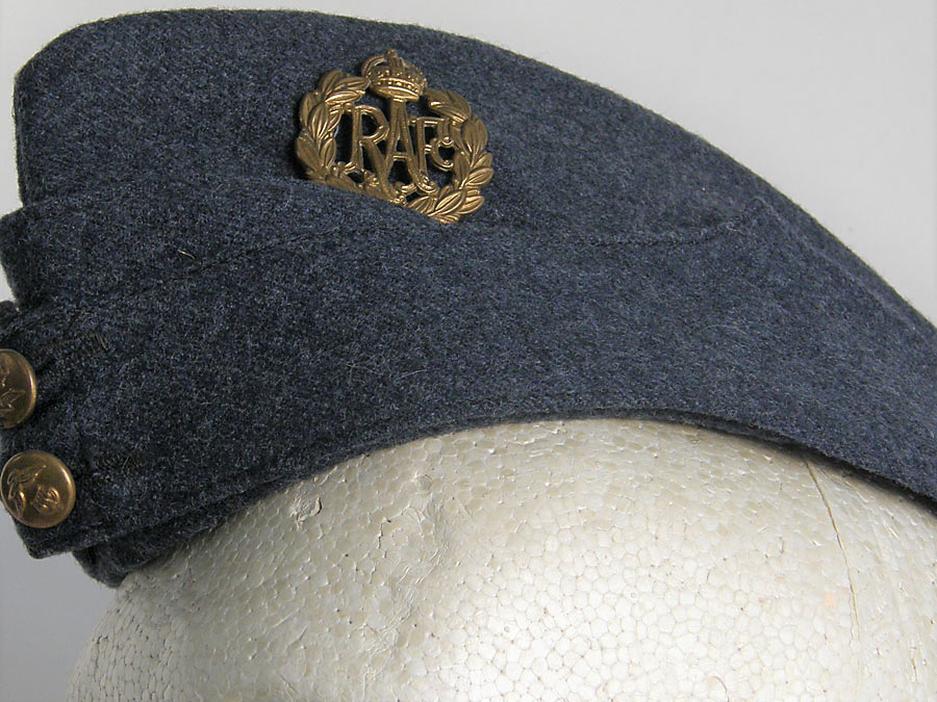
- British infantry’s standard combat headgear was the Brodie helmet.
- Berets were mainly worn by Royal Tank Regiment and Parachute Regiment as unit markers.
- Tank crews wore berets in tank combat due to practicality inside confined spaces.
- Paratroopers wore steel helmets for protection in combat, not berets.
- Commandos occasionally wore berets instead of helmets in specific operations.
- The widespread use of berets in place of helmets in combat was limited and uncommon.
Did British WWII Era Soldiers Often Wear Berets into Combat Instead of Their Helmets?
In short: No, British WWII infantry soldiers did not commonly wear berets into combat instead of helmets. Helmets were the standard protective gear, while berets were mostly ceremonial or functional in specific roles.
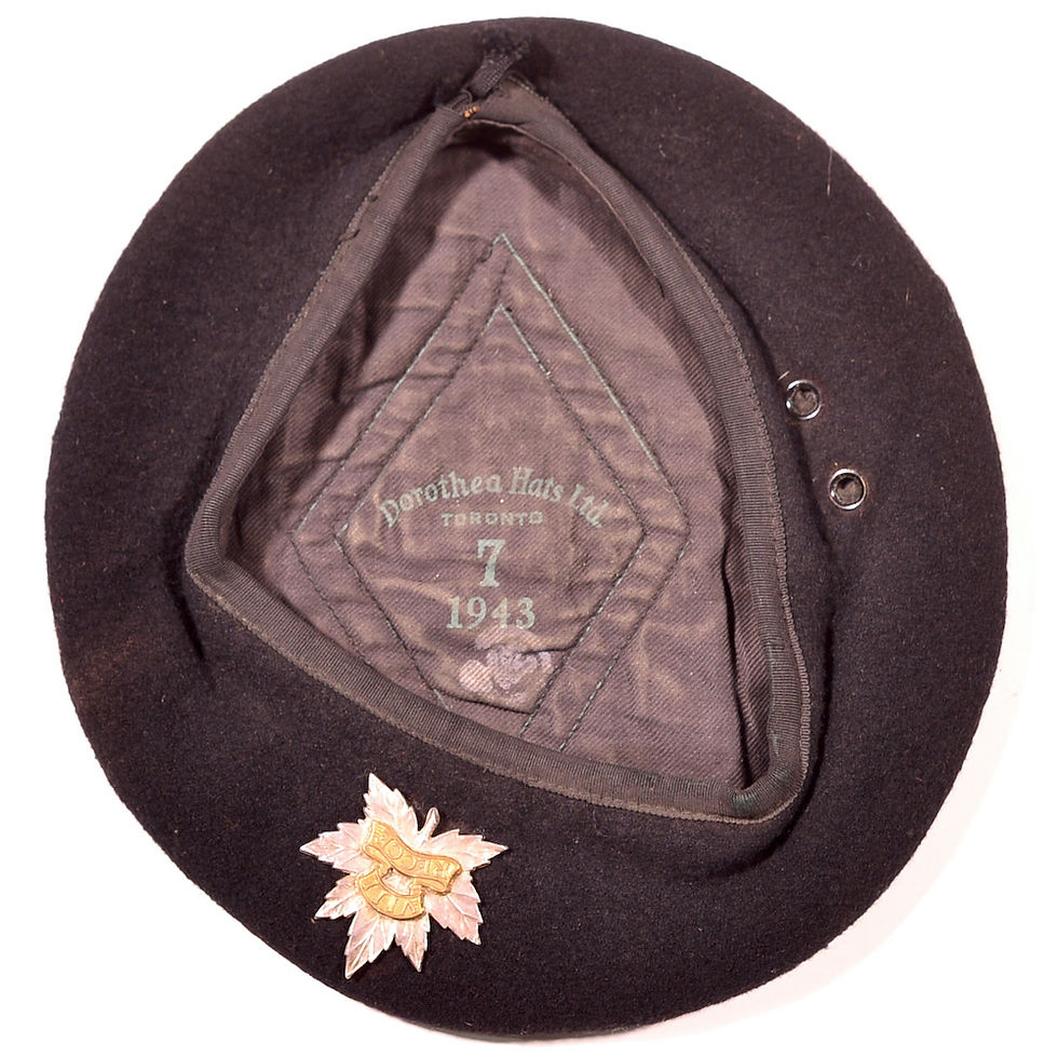
That’s the quick answer, but let’s unpack the story here because it’s a bit richer than a simple yes or no. British soldiers and their headgear during the Second World War had varied traditions and practical reasons behind what they wore. It’s worth understanding who wore what, why, and how combat conditions shaped those choices.
Standard Headgear for British Infantry: The Brodie Helmet
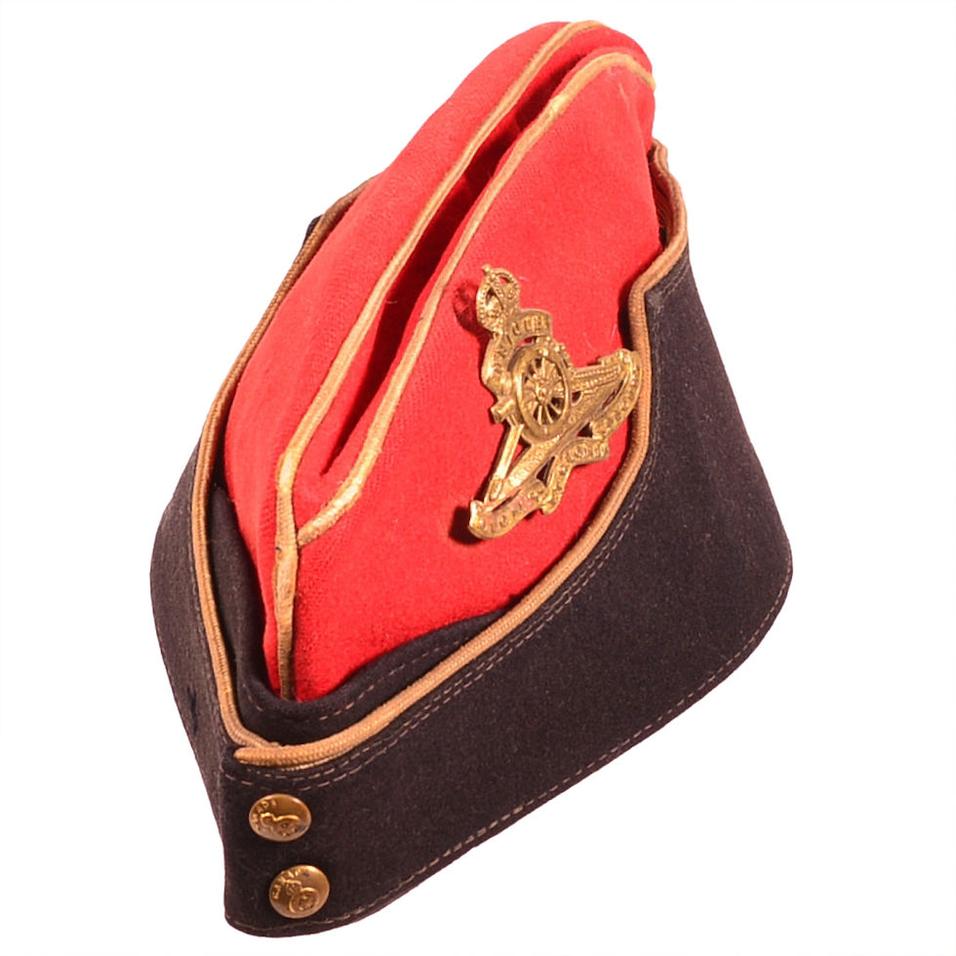
For the bulk of British infantrymen, the Brodie helmet was the go-to headgear in combat. This steel helmet offered essential protection against shrapnel and debris on the battlefield. After all, keeping a soldier’s noggin safe is priority number one.
The Brodie helmet had a simple round shape with a wide brim, excellent for deflecting overhead shrapnel. So, despite the allure of a jaunty beret, it just wasn’t practical for the common soldier fighting in trenches or open fields.
Berets Were Special—Reserved for Certain Regiments
Berets did hold a special place in British military culture, but not as battlefield helmets. They were mostly worn by certain regiments as part of their distinctive dress or practical considerations in specific situations.
- Royal Tank Regiment (Royal Armoured Corps): The black beret was a badge of honour exclusive to the Royal Tank Regiment. These tank crews wore berets not only as a symbol of identity but also for practical reasons when inside their armored vehicles.
- Parachute Regiment: The red beret symbolized the elite parachutists. However, these paratroopers wore steel helmets in combat, often a different style than the standard Brodie helmet, designed more like the American M1 helmet for better protection jumping from planes and during ground combat.
Why Did Tankers Wear Berets Into Combat?
Inside the tight, cramped tanks, wearing a bulky helmet was a nuisance. The small, brimless black beret gave tankers greater freedom of movement and allowed them to peer through viewports and operate machinery with less hindrance.
The adoption of the beret by tank crews began between the wars, owing to its utility rather than purely ceremonial reasons. It was functional headgear that helped the crew share a unique identity while working in confined environments. So, yes, tank crews often wore berets during engagements.
What About Infantry Near Tanks? Helmets Still Reigned Supreme
If you’re imagining infantry soldiers swaggering into battle alongside tank crews in berets, think again. Infantrymen wore helmets in the field. The protective steel helmet was non-negotiable for foot soldiers. It provided vital protection against shrapnel and bullets.
Berets remained more of a dress or identification item for most infantry units.
And Officers? Did They Get to Skip the Helmets?
There might have been additional allowances for officers concerning headgear, but the historic record is fuzzy. A famous exception was Field Marshal Montgomery, who was often seen wearing the black Royal Tank Regiment beret. Yet, he was typically behind the lines rather than charging into machine-gun fire.
When Berets Replaced Helmets: Commandos on D-Day
An interesting exception to the helmet rule happened with the commandos—specifically Lord Lovat’s 1st Special Service Brigade—when they landed on Sword Beach on D-Day. These daring soldiers chose to discard their helmets at the last minute and wore their iconic green berets instead.
Why? Pride and identity played huge roles. The green beret was, and still is, a symbol of elite status in special forces. Anecdotal reports describe how the commandos landed bravely, without the cumbersome steel helmets, proudly displaying their berets with regimental badges. Meanwhile, their personal piper played as they hit the beach – a vivid display of morale and esprit de corps.
How Common Was Beret Use in Combat?
It’s clear—berets did see combat sometimes, but only under specific circumstances. Tank crews wore berets regularly inside their vehicles. Paratroopers had their helmets but sported distinctive red berets as an emblem. Commandos occasionally favored berets over helmets on the battlefield, but that was exceptional.
Therefore, the practice was not widespread. Helmets remained the main protective headgear for British infantry in WWII combat.
Summary: When Berets Were Practical, When They Were Proud, and When Helmets Ruled
Here’s the takeaway:
- The Brodie helmet = standard combat protection for infantry.
- Black beret = mainly Royal Tank Regiment, worn inside tanks for practical reasons.
- Red beret = parachute regiment, used for identification with different steel helmets worn in fighting.
- Green beret = commandos, sometimes wore in combat as a proud statement, notably on D-Day.
- Officers might have slightly different headgear rules, but helmets still dominated in the field.
So, if you picture a WWII British soldier casually rocking a beret in the thick of battle? Not usually. But in armored hulks and elite squads, berets were badges of identity and sometimes even combat wear.
Isn’t it fascinating how practicality and morale shape something as simple as what a soldier puts on their head? The beret tells stories of pride, tradition, and function, but it doesn’t replace the gritty necessity of steel helmets on the front lines.
Next time you see a vintage photo of a British soldier in WWII – check the headgear. It might reveal a lot about their role, regiment, and even the battle conditions they faced.
